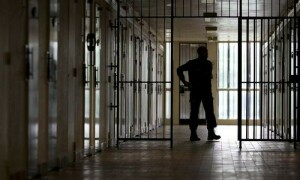
AFTER the Islamic Republic of Iran was shaken by mass protests following the death of Mahsa Amini last year, the Western press (much of which parrots the foreign policy talking points of their governments) depicted the state as being on the verge of collap-se; threatened by a liberal-feminist ‘revolution’.
But, of course, that did not come to pass — and following a series of diplomatic miracles, the least of which was the China-brokered rapprochement with their tra-ditional Saudi rivals, it seems that the ayatollahs are, once again, firmly on top.
So when I recently had the chance to visit this ancient land, I had several questions on my mind. Granted, a few days as a visitor in a new country are surely not enough to pass judgement on a society.
But, to the outsider, it is immediately clear that there are two Irans.
Opposition to the Islamic Republic is not a myth, and many Iranians have begun to flout official religious dress codes openly. This might change, however, as recent reports indicate a renewed tightening of the regulations, with the Gasht-i-Irshad, or ‘morality police’, returning to the streets in force.
Yet, it is also true that in the holy cities of Qom and Mashhad, the revered shrines are packed with pilgrims from within Iran and abroad, while images and symbols of the Islamic Republic and its ideology of Vilayat-i-Faqih are everywhere. What emerges is a picture of an ideologically divided society, with both ‘secular’ Iranians and their religious counterparts trying to shape the national narrative according to their worldviews, in their own ways.
One Iran can be witnessed at Tehran’s Imam Khomeini Airport. Here, the hijab law for women is visibly disregarded, while some young men walk around in shorts or tight jeans.
The atmosphere is so cosmopolitan that sometimes, one has to remind oneself that this is still Tehran airport, and not Paris’ Charles de Gaulle.
There were no real efforts by the Iranian authorities to enforce dress codes (at least while I was there), other than announcements on Iran Air (in Farsi only, not English) urging respect for the law, as well as billboards at bus stations and other public places publicising the virtues of covering up.
Moreover, on the streets of Iranian cities, one notices young men and women sporting the latest Western fashions — perhaps an example of the gharbzadigi (westoxification), as some traditionalist Iranian thinkers have dubbed it.
Many young women wear but a perfunctory sliver of a hijab barely resting on their heads, while young men sport the latest haircuts and plenty of bling. Public sloganeering against the ‘Shaitan-i-Buzurg’ (a moniker for the United States) may be part of life in Iran, but it is clear that a large segment of the population is inspired by Western fashions, lifestyles and, presumably, ideology.
But then, there is another Iran, where the Islamic Revolution still thrives. Here, the all-enveloping chador replaces nearly-bare heads, while many hands are seen clutching prayer beads. Principally, these scenes can be witnessed in the holy cities of Qom and Mashhad, which form the religious heart of Iran.
Interestingly, while the Hauza Ilmiya (seminary) of Qom attracts many students from across the world — including Pakistan — young Iranian seminarians are also present in considerable numbers.
Elsewhere, symbols of the revolution are everywhere, including portraits of Ayatollah Ruhollah Khomeini, the founder of the Islamic Republic, and his successor Ayatollah Ali Khamenei.
Apart from public buildings, in shops for example, pictures of Imam Khomeini and the supreme leader are plentiful. Moreover, images of Iran’s ‘shuhada’ or martyrs are omnipresent. Outside mosques, along highways, in public places, the state makes sure citizens do not forget their war dead.
But there is also evidence that people have a strong attachment to their fallen, independent of the state narrative. For example, one witnessed many automobiles featuring decals and posters of Gen Qasem Soleimani, the Quds Force commander assassinated in a US drone strike in 2020. The Americans may have considered the late general public enemy number one, but to many Iranians, irrespective of their religious views, he remains a hero and a national symbol.
Here, the religious and the political seem to fuse seamlessly. For instance, at Imam Raza’s shrine in Mashhad, there is a large mural depicting the Palestinian struggle.
After the revolution, Iranian support for the Palestinian cause has been sustained, with Youm Al Quds — observed on the last Friday of the holy month of Ramazan the world over — being promoted since the time of Ayatollah Khomeini.
Moreover, after daily prayers, slogans of ‘marg bar’ can be heard prefixed to the name of the enemy of choice for that week, followed by prayers for the longevity of the state.
Perhaps, there is no dissonance between these two ‘parallel’ societies. After all, countries across the globe — including Pakistan and Tehran’s arch-nemesis, the United States — that are divided along political and ideological lines.
But it seems that international attention is specifically focused on Iran because the question of who calls the shots in Tehran has much wider geopolitical implications.
It will be interesting to see how the opposing ideological currents in Iran continue to interact with each other. Will there be coexistence and harmony, or continued confrontation and acrimony?
Will revolutionary fervour sustain, or will a new generation, who do not consider themselves children of the revolution, demand something else?
For Pakistan and much of the world, developments within Iran will remain closely watched.
Published in Dawn, July 20th, 2023
















































Dear visitor, the comments section is undergoing an overhaul and will return soon.